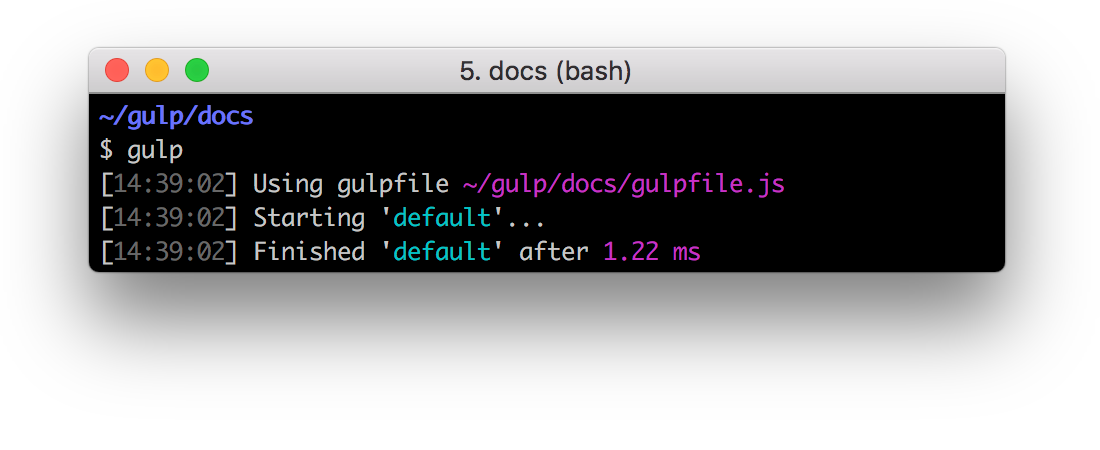Quick Start | gulp.js (original) (raw)
If you've previously installed gulp globally, run npm rm --global gulp before following these instructions. For more information, read this Sip.
Check for node, npm, and npx



If they are not installed, follow the instructions here.
Install the gulp command line utility
npm install --global gulp-cli
Create a project directory and navigate into it
Create a package.json file in your project directory
This will guide you through giving your project a name, version, description, etc.
Install the gulp package in your devDependencies
npm install --save-dev gulp
Verify your gulp versions
Ensure the output matches the screenshot below or you might need to restart the steps in this guide.

Create a gulpfile
Using your text editor, create a file named gulpfile.js in your project root with these contents:
function defaultTask(cb) {
// place code for your default task here
cb();
}
exports.default = defaultTask
Test it
Run the gulp command in your project directory:
To run multiple tasks, you can use gulp <task> <othertask>.
Result
The default task will run and do nothing.